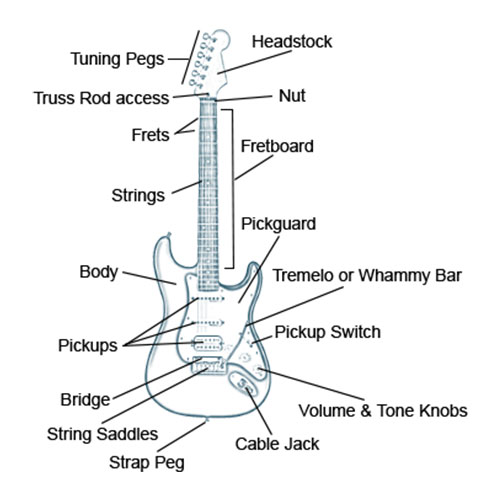 |
I remember sitting up nights reading a lot of material trying to learn how to read a song, and find out which key a song is in, so that I might easily know which notes to base a solo on. But I haven't found any good guides that sums it all up, just some guides that seem to include some of the material. This is for beginners, to get a grasp of the subject. So I thought I would write a lesson just for getting the basics down. I am a beginner myself(played guitar for just over a year now, and banjo for 2 months) and love playing guitar so this has become a passion for me. Anyways, let's get down to business, shall we? Let us see, let's take a song called "Me and Bobby McGee." The version I play uses the chords G, C andD. Therefore, this song is in G. Now, why is the song in G? Well let me tell you how I knew that, because it had G, C and D in it. Let me write down a chart:
Now what can we see here? Well for startes, 1, 4and 5 are ALWAYS Major chords (G, C, F# etc). 2, 3and 6 are always minors (Dm, Am, C#m etc) and 7s are diminished chords, even though sometimes used as a major in certain songs. So, we have "Me and Bobby McGee," a song which as a G major, C major and D major chords in it. Look down the chart, which songs have G, C and D majorin it? Ah, G has those three chords. Therefore "Me and Bobby McGee" is in G. Lets take another nice country song while we're at it:






 tuning pegs - One for each string. This is where the end of the string is wrapped typically 2 to 3 times. You tune the guitar with these pegs by twisting these to adjust string tension.
tuning pegs - One for each string. This is where the end of the string is wrapped typically 2 to 3 times. You tune the guitar with these pegs by twisting these to adjust string tension. The guitar had its primitive origins in the ancient Near East. Clay plaques excavated from Babylonia, dated circa 1850 B.C., show figures playing musical instruments, some bearing a general resemblance to a guitar and having a distinctly differentiated body and neck. Later evidence from ancient Egypt indicates a necked instrument with marked frets about the neck. A stringed instrument from ancient Rome incorporates a wood soundboard with five groups of small sound holes.
The guitar had its primitive origins in the ancient Near East. Clay plaques excavated from Babylonia, dated circa 1850 B.C., show figures playing musical instruments, some bearing a general resemblance to a guitar and having a distinctly differentiated body and neck. Later evidence from ancient Egypt indicates a necked instrument with marked frets about the neck. A stringed instrument from ancient Rome incorporates a wood soundboard with five groups of small sound holes.



